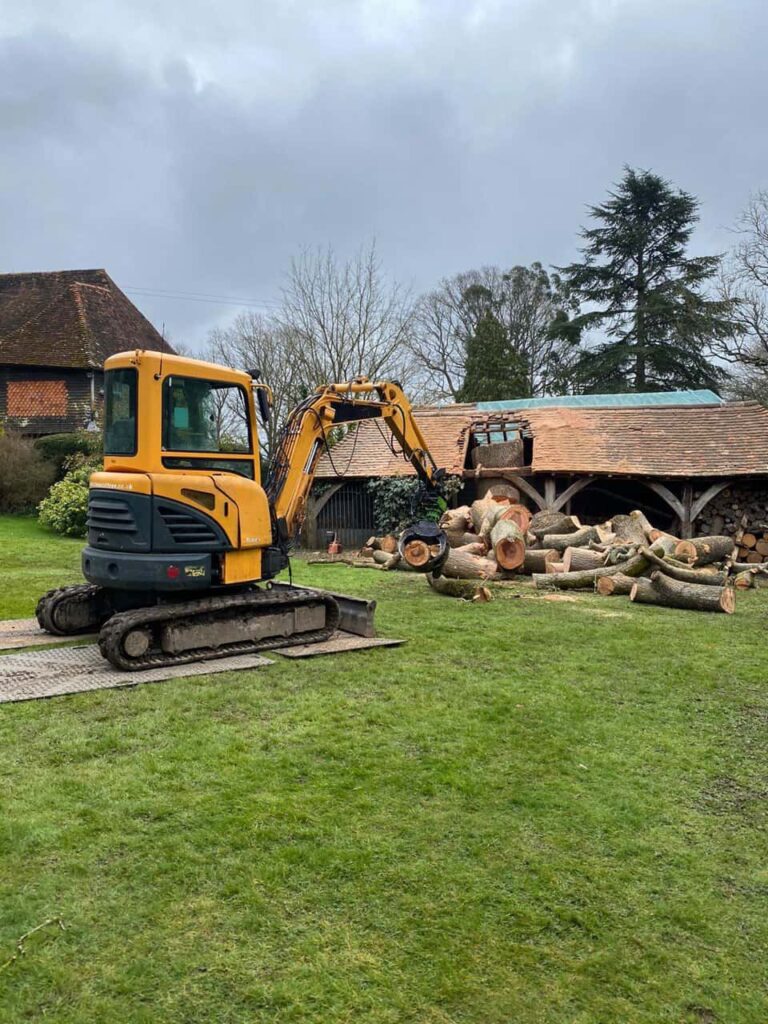Introduction: Shade trees are valuable to any landscape, relieving the sun’s scorching heat and adding beauty to outdoor spaces. However, proper care and maintenance are essential to keep them healthy and safe. Pruning, in particular, is a key practice for shade trees, as it enhances their aesthetics and contributes to safety. In this blog post, presented by Linton Tree Surgeons, we’ll explore the importance of pruning shade trees and how they can enhance the appearance and safety of your outdoor environment.
1. Aesthetic Benefits
Enhancing Shape and Form: One of the primary reasons for pruning shade trees is to improve their shape and form. Over time, trees may develop irregular growth patterns, dead branches, or overcrowded canopies. Pruning helps restore the tree’s balanced and attractive appearance, making it a focal point in your landscape.
Encouraging Flowering and Foliage: Pruning can stimulate the growth of new branches and foliage, leading to more abundant flowering and lush canopies. This is especially important for species valued for ornamental qualities, such as flowering cherry or dogwood trees.
Maintaining Size: Shade trees must be pruned to control their size and prevent them from becoming overly large for their designated space. Pruning allows you to manage the tree’s growth and prevent it from encroaching on buildings or walkways.
2. Safety Considerations
Dead Branch Removal: Dead or decaying branches are safety hazards, as they can fall unexpectedly and cause damage or injury. Pruning removes these branches, reducing the risk of accidents.
Structural Integrity: Pruning can improve the structural integrity of shade trees by removing weak or poorly attached branches. This helps prevent limbs from breaking during storms or heavy winds.
Visibility: Clearing lower branches through pruning can improve visibility near roadways or driveways, enhancing safety for pedestrians and drivers.
Reducing Disease Spread: Pruning helps identify and remove branches affected by diseases or pests. By promptly removing infected portions, you can prevent the spread of these issues to the entire tree.
Proper Pruning Practices
Timing: The timing of pruning can vary depending on the tree species. In general, late winter or early spring is ideal for most shade trees, as they are dormant and less susceptible to stress.
Techniques: Use proper pruning techniques, including cleaning cuts outside the branch collar to promote efficient healing. Avoid excessive pruning, as overzealous trimming can stress the tree.
Professional Assistance: For large or mature shade trees, it’s advisable to seek the expertise of tree care professionals like Linton Tree Surgeons. They have the equipment and knowledge to safely and effectively prune large trees.
Conclusion: Pruning shade trees is a valuable practice that enhances their aesthetic appeal and ensures safety within your outdoor environment. By maintaining their shape, controlling size, and removing hazardous branches, you can enjoy the benefits of shade trees while minimising risks. If you’re uncertain how to prune your shade trees correctly or have concerns about their health and safety, don’t hesitate to consult experts like Linton Tree Surgeons. A well-maintained shade tree can be a lasting asset to your landscape, providing shade, beauty, and peace of mind.
Call us on: 01223 919 495
Click here to find out more about Linton Tree Surgeons
Click here to complete our contact form and see how we can help with your tree’s needs.

